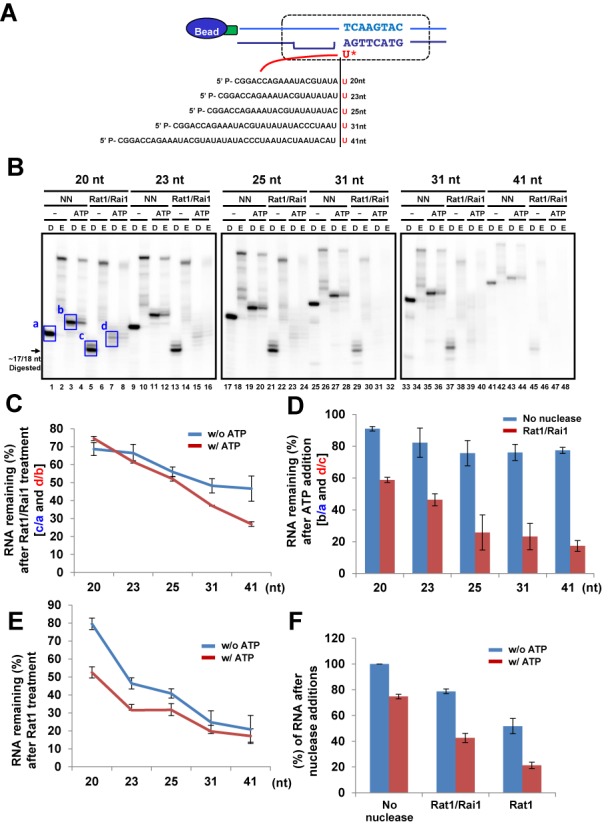Figure 5.

The length of RNA degraded by Rat1 affects RNAPII termination. (A) Five ECs harboring different lengths of RNA were tested in the assay. (B) Representative gel images of the Rat1/Rai1-treated in vitro transcription termination assay. (C) Quantification of the remaining RNAs after Rat1/Rai1 treatment without or with ATP. The remaining RNA amounts without or with ATP addition in the no nuclease (NN) groups (a or b, respectively; blue box in gel images) were set to 100% for each EC and the percentage of remaining RNA amounts in the Rat1/Rai1-treated groups without or with ATP treatment (c/a or d/b, respectively) were calculated for each EC. In the presence of ATP, the remaining RNA level after Rat1/Rai1 treatment rapidly decreased as the RNA lengthened. However, this level moderately decreased in the absence of ATP. (D) Quantification of the remaining RNAs after ATP addition in no nuclease (NN) or Rat1/Rai1-treated groups. The remaining RNA amounts without ATP addition (a or c, respectively) were set to 100% and the percentage of remaining RNA amounts after ATP addition (b/a or d/c, respectively) were calculated for each EC. The remaining RNA amounts specifically and gradually decreased in the presence of Rat1/Rai1 as the length of the RNA increased. (E) Quantification of the remaining RNA amounts without or with ATP addition after Rat1 treatment. There is a dramatic decrease in the remaining RNA level as the RNA length increases but little difference in the remaining RNA levels, regardless of ATP addition, at the ECs harboring 31 and 41 nt RNAs. (F) Rat1 terminates RNAPII in a similar fashion to Rat1/Rai1. Addition of ATP also enhances termination by Rat1 alone.
